History of the police station in St John's Wood including David Niccol's Memories of serving there at the end of the 20th century
St John’s Wood police station in New Street (Portland Town) was established by the time of the 1851 census when it housed a 57 year old Inspector with his wife and children, 4 Police constables , 31 policemen and a gardener and also a prisoner aged 14. The police station in Great Marlborough Street was similar to the police station in St. John’s Wood having cells and a magistrates court plus living quarters for all the policemen, but has now been turned into the Courthouse Hotel and one can buy a coffee or drink and sit in a CELL to consume it! The COURT is now a smartly panelled dining room, and the room where lawyers and witnesses assembled is the hotel breakfast room.
Now in 2019, the St John’s Wood station is closed and the police are based in Church Street, which is very different. Adam Sloane and Adem Tanrikulu for example are both Community Support Police Officers today. They served at St John’s Wood Police Station until the day when the station finally closed, and felt welcome , were appreciated and smiled at in the High Street, given biscuits from time to time! Church Street is very different and on the estates around there, you find gangs relating to different cultures and languages, at odds with each other and the police. St John’s Wood had been more like a second home.
The early history of the police force in London
As London became larger at the start of the 19 century, the locally maintained system of volunteer constables and “watchmen” was ineffective, both in detecting and preventing crime. In 1822 Sir Robert Peel , Home Secretary, believed that the police should be organised in a civilian fashion and answerable to the public. To appear neutral, the uniform was deliberately manufactured in blue, rather than red (which was then a military colour), along with the officers being armed only with a wooden truncheon and a rattle to signal the need for assistance. Along with this, police ranks did not include military titles, with the exception of Sergeant. At the time, burglary, (or “house breaking” as it was then called) was a common problem for police, and House breakers were usually armed. In 1884 the Home Secretary invited competition from many companies to invent a police whistle to replace the rattle.
The original standard wage for a Constable was one guinea (£1.05) a week. Recruitment criteria required applicants to be under the age of 35, in good health, and to be at least 5 ft 7 in (1.70 m). Working shifts lasted 12 hours, 6 days a week, with Sunday as a rest day. Until 1897, Metropolitan Police officers did not receive a boot allowance.
The initial force consisted of two Commissioners, eight Superintendents, 20 Inspectors, 88 Sergeants and 895 Constables. Between 1829 and 1830, 17 local divisions each with its own police station were established, each lettered A to V, allocating each London borough with a designated letter. Marylebone was D.
Drunk and disorderly was the most common offence to be dealt with at the Police Courts. Men and women were brought before the magistrates usually after an uncomfortable night in the cells of a station house, to be fined and/or sent to prisone for a few days or weeks. The worst nights for drunkenness were Friday or Saturday. The courts also dealt with some strange requests. In 1830 the Gt Marlborough St magistrate was asked for help by an elderly gentleman whose wife had left home complaining of ill health and saying she would visit friends in the country. When he could not contact her, he thought she had been abducted and asked for help in rescuing her but it soon became apparent she was living in St John’s Wood with a younger man and the magistrate could only suggest he apply for a writ of habeas corpus and serve it on his rival.
By the time of the 1881 census there were a police sergeant with 42 constables at St Johns Wood and also 5 prisoners being kept overnight until the next court sitting – a cabman, 2 hawkers a carpenter and a labourer. By 1900, the Metropolitan force had grown to nearly 16,000 officers, organised into 21 divisions, responsible for law enforcement within an area of nearly 700 square miles. In 1901 the police station in New Street was being run by a Metropolitan Police Inspector with his wife and 2 daughters, 3 Sergeants and 35 constables. A Fingerprint Bureau was set up in 1901 and in 1905 finger print evidence secured the first conviction.
David Niccol’s story
I had thought of being a police officer from the age of about 15 but in the ’60’s many of the police forces in Scotland were small in area and personnel. Every time I would speak to officers around my home town of Glasgow I was advised to ‘Join the Met’. In those days London had a mystical fascination and so it turned out. I actually only served 12 months at ‘The Wood’ in 1972 but as with multiple postings in my 33 years police service it was filled with fond memories.
I trained at Hendon in 1967 where the few buildings were surrounded by farmer’s fields and then I was posted to Paddington Green Police Station as PC 483DP. ‘D’ Division comprised of four stations, Paddington “DP”, Harrow Road “DR”, Marylebone Lane”DM”, and the lovely St John’s Wood “DD” at 20(and a half) Newcourt Street.
Despite being the smallest building it became the Divisional Headquarters with the offices in the upper floors. These had previously been sleeping quarters for single officers. This was convenient and cheap for the organisation who could call upon the men at time of crisis such as the Grosvenor Square riots of 1968. The conditions were very poor for the officers who only had a bed partitioned off from the next one and were disturbed by all the various changes of shifts not to mention the occasional drunken bawling from the cells below. The 1911 census shows numerous policemen registered as sleeping there.
Everyone had to serve two years ‘probation’ before being confirmed as a Police Constable. It was a fascinating and challenging spell, my first arrest, first court appearance, dealing with my first death (a suicide by coal gas poisoning), traffic offences and the plethora of incidents a patrolling police officer came across.
We had no personal radios and only one vehicle per sub Division could receive calls from ‘The Yard’. If the station wanted to speak to you they set the light on top of the police box flashing and the public knew to inform you. This led to ridiculous and dangerous situations.
I was patrolling in Sussex Gardens when I was told the light was flashing on the box in the Bayswater Road. I started the long walk noting an ambulance outside number 33. The call sent me back to 33, Sussex Gardens to assist the ambulance crew and the Mental Welfare Officer with a patient. I was in quite a lather by the time I walked quickly back, up three flights of stairs to be confronted with two uniformed NHS men and two somewhat elderly women. If I had my time again I would have thought before asking ‘Who is the Mental Welfare Officer? ‘ whereupon the lady who was the patient erupted, screaming ‘ I am not mental’ The experienced ambulance crew were distinctly unimpressed as they had kept her calm for 40 minutes waiting for me.
On another occasion I was patrolling in the wee small hours and went into the normally deserted Marylebone Railway Station. I spoke to a huge man sitting forlornly on one of the benches. He appeared to be a down-on-his luck rather than a vagrant just staying in the dry. I chatted to him and took his details but to contact Scotland Yard, to do a Criminal Records Check, I had to go to a telephone box and dial the free phone number direct into the records office. They could tell it was an officer on the beat and answered quickly and soon came back on the line asking where I was and told me to stay there. I could tell from the tone of his voice that something was amiss. Within a couple of minutes the two wireless cars from Paddington and Marylebone roared onto the concourse to help me as the man turned out to have mental problem and had recently murdered his landlady in Kings Cross. He could have easily overpowered me and I had no means of calling for help.
We were allocated a ‘beat’ for three weeks at a time and had to learn the local villains and vulnerable premises. Whilst I can recall endless events I tend to ignore the spells of sheer boredom e.g. guarding the rear entrance to a private hospital where King Hussain of Jordon would be treated.
Joining the CID
It was when I was guarding the scene of a double murder in Lancaster Gate, where I saw the work of the detectives and scenes of crime staff, that I developed the ambition to join the C.I.D. To achieve this I had to join the local Crime Squad, patrol in plain clothes and show the ability to arrest suspects, conduct interviews, take statements and present minor cases at court. From there I was posted to Harrow Road as a TDC (Temporary Detective Constable) and was paired with an experienced partner.
One of our early arrests was in Moscow Road off Queensway. My partner went to park the car as I waited outside a café. I watched as a respectably dressed man pulled violently at a car door handle on the opposite side of the road. He looked over and saw me watching and in split second gave away his guilt in the look of fear in his eyes. He was brazen enough to walk straight over towards me as if to go past. I identified myself and asked what he had been doing whereupon he denied even touching the vehicle. I took him over the road and saw two boxes each containing twelve bottles of scotch on the front seat. On informing him he was under arrest he exclaimed ”Please don’t nick me for a silly thing like sus” (suspected person loitering with intent to commit an offence). This took me somewhat by surprise coming from a well-dressed man in his forties. No sooner did I write this in my pocket book than he offered to give me £200 if I let him go and he would meet me back there in twenty minutes. I duly wrote this in the book and got my colleague to witness it when he arrived.
It turned out he was a consummate ‘con’ man who had ordered three boxes of scotch from MacFisheries store to be delivered to an empty top floor flat and I had interrupted the plan as he started to break into the car. Suffice to say he feigned illness whilst in custody overnight and was released to the hospital. When we finally got him to Crown Court he said he had had a bout of renal colic causing him to support himself on the car door handle, I had invented the ‘sus’ comment and the offer of a bribe was not allowed to be mentioned as I was alone at the time and he didn’t actually have any money. The jury duly acquitted him, hugely frustrating as he had nineteen previous convictions for similar offences, again unknown to the jury.
Posting to St Johns Wood
The next step was my posting to St Johns Wood as an Acting Detective Constable. I had to deal with the suspects arrested by the uniform officers and attend the reports of burglaries as the area attracted such offences.
My favourite story involved a lovely lady, Audrey Farmiloe, the heiress to Farmiloe Glass. She lived alone in a huge house with a small gate onto Maida Vale. Late one night she was recording audio tapes for the blind when she heard the sounds of a burglar trying the break into the back of the premises. Due to the size of the property she was able to summon the uniformed officers and lead them through the house to the rear without disturbing the activities of the felon. He finally realised the situation and ran to the far corner of the large garden to hide. The officers reported that Audrey grabbed a fishing gaff from the hall stand and led the charge up the garden only to inflict a couple of severe blows to the man before being stopped. Audrey was well in her seventies at the time!
I had to deal with the case the following morning and remand the prisoner in custody at court. As the charges were sent to the Crown Court I needed to visit Audrey on a few occasions to take statements and identify exhibits. It was with some trepidation but admiration in equal measure that on one visit I found she had obtained an air pistol from the Army and Navy store with a specially designed small grip. There she was in the alleyway in front of the house firing pellets at facial targets cut from magazines and pasted onto shirt box lids. The gardener had to put the target up at the end of the passage, retreat, then adjudicate on the success of her shots!! Audrey was a great character who always offered me my native tipple when I visited.
There was undoubtedly a drinking culture in the C.I.D. in those days whereby St Johns Wood had the smallest C.I.D. contingent in the Met yet had the biggest Christmas Party. This was held in the great hall in Madame Tussauds amongst the waxworks and all the celebrities and show business people who lived on ’the Manor’ were invited. I recall Lionel Blair and I think Jack Parnell in attendance. The party got bigger and bigger year on year but came to an abrupt halt when a waxwork lost an arm during one such revelry and we had to have a huge collection amongst the officers to pay for it.
Lords Cricket Ground and Regents Park were both within our jurisdiction and presented varying policing challenges the biggest being the dreadful IRA bombing of the soldiers in the bandstand in 1982.
Later years in the CID
I had left the Wood nine years earlier and went through the ranks of the CID occasionally returning to uniform for short periods when promoted. As a uniform Inspector at Marylebone in the early ’80’s I had to supervise the work of the night duty officers at St Johns Wood so returned fleetingly.
Along with many others I was sent up to the miners strike problems in the Derby and Nottingham coalfields. It seems to have been forgotten that they hated Arthur Scargill and wanted to carry on working. They warmly welcomed our convoys who would protect them from the violent attacks from the Yorkshire mobs. It was a strange existence normally billeted in RAF camps. We would get up at 01.30 to be fed a massive fried breakfast in case we didn’t get another chance to eat for the next sixteen hours. It was rather akin to being at war as we would be released in the afternoon if there was no trouble at our pit but would see other units return hours later battered and bloodied from a violent confrontation. This was not a pleasant time but the vast number of overtime hours we worked put my family’s finances very much in the black.
I had married the most wonderful nurse from the Outer Hebrides who understood the rigours of shift work and the gruesome sights we had to contend with. It is true ‘that behind every successful man stands an astonished woman!’. We will shortly have been married forty seven years which she describes as the equivalent of two life sentences!
I went on to work at Scotland Yard on Cheque Fraud, Drugs and Counterfeit Currency. I had a spell on surveillance which was fascinating but could be boring. I worked at wildly differing stations from Notting Hill, to Chelsea, to Holloway and I returned to Hendon as an instructor. I’m sorry to say I also had to deal with complaints against the police for a spell, an essential but difficult task. Please believe me it is nothing like life portrayed in ‘Line of Duty’, sorry!
Retirement years
I finally retired as an officer after 33 years having reached the rank of Detective Chief Superintendent, latterly dealing with the murders occurring in North West London. I went on for another 13 years as a consultant to the Development Programme for Senior Investigators, one of the many recommendations of the MacPherson Report into the racist murder of Stephen Lawrence.
I look back with great fondness to my career, every posting had its challenges but also endless stories. The advent of the Crown Prosecution Service changed many of our procedures but increased the paperwork enormously. The discovery of DNA was the biggest leap forward. If only we had had that back in those halcyon days at ‘the Wood’.

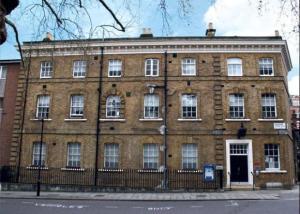
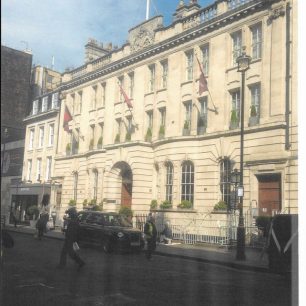
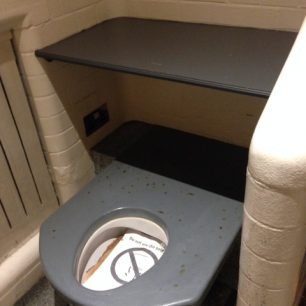
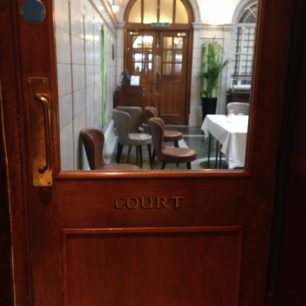
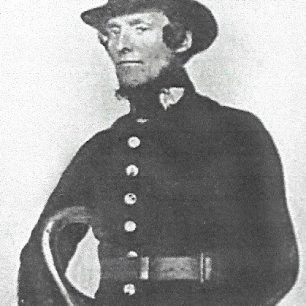
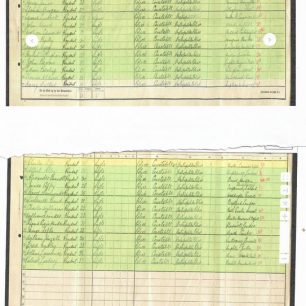
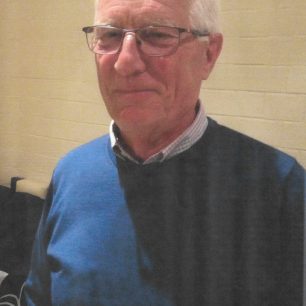
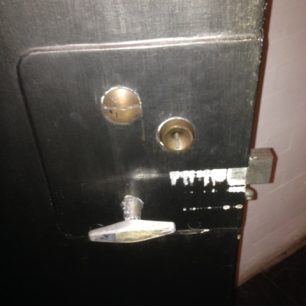
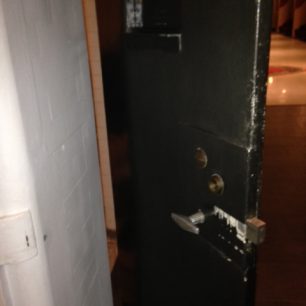
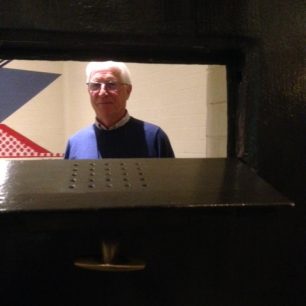
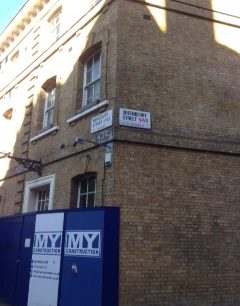



Comments about this page
I worked out of St John’s Wood from 1981 – 1985 on SPG. Top floor of nick. We got on well with the reliefs and it was a great place to work from. 2 pubs spring to mind, The British Flag just down the road from the nick and Rossetti’s, a Fullers pub next to St John’s Wood barracks. Both gone now, like the nick. The landlord of the Flag could be called if we were a bit after 2300 if you know what I mean.😁
Great read, thank you. Served there for a couple of years in the early 90s just before moving to the TSG at Paddington -great posting. Loved the Church St market where a couple of lovely ladies would always feed us with hot chilli prawns freshly made !! I remember the walks around Lisson Grove not so fondly !!!
Having completed my initial training at Hendon in September 1967, posted to D division, I arrived at divisional headquarters St Johns Wood Police Station for posting. My classmate, Kieth Jones went to Harrow Road Police Station, I arrived at Paddington Green. I remember most of D relief, including Dave Niccol. Our relief Inspector Bill Young was supported by Sergeants Hepple, Woods, Pike and others along the way. We would parade as many as twenty plus officers night duty. These include some, by surname:- PC’s Pugh, Rule, Otway, Barker, Pollard, O’Reilly, Owen, Erwood, Musgrave, Knight, Lofts, Stephens, Butters, Coburn. et.al. There was never a better group of officers or place to launch your career. The happiest days of my service, which in total amounted to forty seven years.
Graham Evans
Met/Surrey Police Rt.
Well what a career you’ve had, young David. I remember you well from your 1967 period at Hendon.- I remember consoling you when Third Lanark went “out of business”
You always did have something special and it’s really no surprise that you’ve achieved so much in your career. Congratulations- Hopefully McMorran and Butcher had moved on when you did your stint at Hendon for the second time.
I remember the Police Station well.
It was my regular port of call when I fell out with the local officers.
I was a cadet at St Johns Wood, and then uniform and C.I.D on D Division. I have fond memories of playing rugby with yourself, Gus Hunter, Hughie Mcnichol, Arwyn Hughes and many others.
I remember serving here as a TDC and at Christmas we would have our annual do just down the road in the local pub. Before heading down there though we would have a few drams in the Nick. We were then marched down the road by the Station Inspector, a lovely Scot who would by then have his kilt on and played the bagpipes all the way to the pub. What a sight we must have been. Happy days Davie.
I was a Pc at St John’s Wood from 1972 to 1977, having moved from Marylebone Lane. Many happy memories of great colleagues, and lots of interesting and often amusing incidents. I remember meeting a retired officer in Newcourt St, and he told me the chap on the famous white horse at the 1923 cup final had served at the Wood. There were many famous people living locally, and they were often seen in the High St.
I worked at St John’s Wood from the early to late 1990’s and having now policed all over the world, this station is still my personal favourite. Many, many fond memories of a very happier, more innocent time pre internet and mobile phones. I feel honoured to have been one of the few that hung my head out of the sash windows on a summer night.
Add a comment about this page